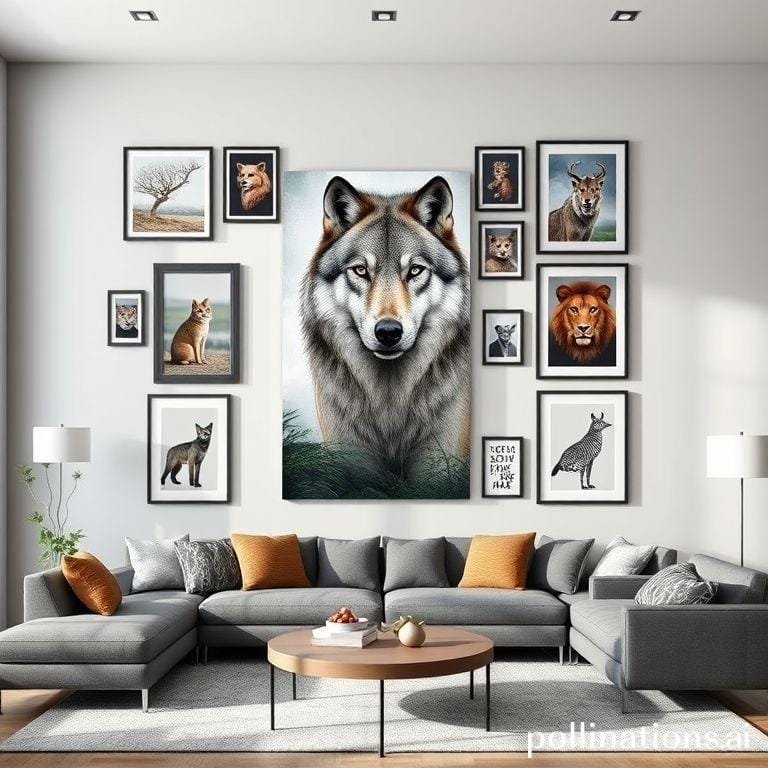Your cart is currently empty!
From Cave Walls to Digital Canvases

For thousands of years, people have felt a deep need to decorate their surroundings, like turning blank walls into personal storybooks. The oldest known wall art goes back over 40,000 years to a time called the Paleolithic era. Early artists used natural colors from the earth to paint amazing pictures of animals, hunting scenes, and patterns in caves across Europe and Indonesia. These ancient artworks, like those in France’s Lascaux Caves or Indonesia’s Sulawesi region, show incredible skill and give us clues about how early humans thought and lived.
Scientists believe these cave paintings had many purposes beyond just looking nice. Many think they were like spiritual bridges, hunting charms, or visual stories that passed knowledge from generation to generation. The materials were all natural – charcoal, colored earth, and minerals mixed with animal fats or plant juices to make paint that has surprisingly lasted for thousands of years. Their techniques were clever too, including spray painting using hollow bones, hand stencils, and shading to make things look three-dimensional.
What’s really interesting is how well these early artists knew their world. The animals they painted – bison, horses, deer, and mammoths – are shown accurately and often seem to be moving with personality. This shows they watched animals closely and knew them well. The places they chose for these artworks were also important, often deep in caves that needed torchlight to reach and paint, suggesting these were special spaces beyond everyday living areas.
Ancient Civilizations and New Ideas
As human societies changed from wandering hunters to settled farming communities, wall art became more advanced and varied in its uses and styles. The ancient Egyptians took wall painting to new levels, covering tomb walls, temple columns, and palace rooms with detailed scenes of gods, pharaohs, and daily life. Their art followed strict rules – figures shown in a mixed view (face from the side but eye and shoulders from the front), important people drawn larger, and color symbolism (gold for gods, red for men, yellow for women).
The Egyptians developed better painting methods, creating bright colors from minerals like green malachite, blue lapis lazuli, and red cinnabar mixed with egg or plant gum as glue. Their artwork had clear religious and political purposes – helping the dead reach the afterlife, honoring gods, and showing off pharaohs’ achievements. The famous tomb of Nefertari in the Valley of the Queens has some of the most beautiful examples, with colors that are still bright and details that amaze experts today.
Meanwhile, around the Mediterranean, Minoan, Greek, and Roman civilizations created their own styles of wall decoration. The Minoans of Crete made lively, realistic frescoes showing dolphins, bull-jumping acrobats, and procession figures, using true fresco technique (painting on wet plaster) that made very durable artworks. The Romans later expanded these methods, covering their homes with elaborate fresco cycles, architectural illusions, and still-life scenes that showed wealth and cultural sophistication.
“The walls of Roman houses were not just backgrounds but active parts of home life, creating illusions of more space, showing the owner’s tastes, and providing constant visual pleasure.” – Dr. Elizabeth Marlowe, Classical Art Historian
Roman wall painting changed through four distinct styles, from simple fake brickwork to intricate mythological scenes and fantastic building designs that made walls seem to open onto imaginary landscapes. The eruption of Mount Vesuvius in 79 AD preserved many examples in Pompeii and Herculaneum, giving us amazing insight into Roman home decoration and proving that the desire for beautiful wall art has always been part of human civilization.
Middle Ages to Renaissance Changes
The Middle Ages saw a big shift in wall art’s purpose and who paid for it. With Christianity spreading across Europe, wall paintings became mainly religious, decorating churches, monasteries, and cathedrals with Bible scenes and saints’ lives. These artworks acted like “books for those who couldn’t read” – visual stories that taught Christian beliefs to people who didn’t know Latin. The style became more symbolic than realistic, with gold leaf backgrounds showing divine light and compositions that emphasized spiritual rather than physical reality.
Techniques improved with the widespread use of fresco painting on plaster walls and ceilings, especially in Italian churches and Byzantine basilicas. Artists developed smart methods for transferring designs, creating perspective tricks, and achieving bright color effects with limited pigments. The Byzantine tradition particularly excelled in mosaic wall decorations, covering entire church interiors with millions of tiny glass, stone, and gold leaf pieces that shimmered in candlelight, creating awe-inspiring spiritual spaces.
The Renaissance was a revolutionary turning point in wall art’s history. Artists rediscovered classical ideas of realism, perspective, and human focus, turning walls into windows onto perfect worlds. The development of linear perspective and its use in places like the Brancacci Chapel created never-before-seen depth and realism. Fresco technique reached its highest point with Michelangelo’s Sistine Chapel ceiling and Raphael’s rooms, showing how walls could become the ultimate canvas for showing artistic genius and intellectual ambition.
This period also saw the emergence of oil painting on canvas, which eventually replaced fresco for large works. While first used for easel painting, artists began putting large canvases directly on walls, allowing for more movable and flexible decoration. This change would eventually lead to the modern idea of wall art as something you can move and change rather than permanent building features.
The Growth of Printed and Mass-Produced Art
The invention of the printing press in the 15th century started making art more available to everyone, but the 19th century truly changed wall art access. Lithography, developed in 1796, allowed for high-quality art copies at affordable prices. For the first time, middle-class families could own beautiful artworks for their homes instead of just wealthy people who paid for original paintings. Companies produced millions of prints showing landscapes, historical events, and sentimental scenes that decorated living rooms everywhere.
The Arts and Crafts movement reacted against factory-made items by supporting handmade wallpapers and fabrics that turned whole rooms into artworks. Intricate nature patterns brought artistic quality to everyday interiors and influenced design for years. Meanwhile, color printing improvements allowed full-color copies of famous paintings, making masterpieces available to many people.
The late 19th and early 20th centuries saw poster art become a real wall decoration form. Artists raised advertising posters to high art status with innovative designs, bold colors, and distinctive styles. These works, originally promoting everything from nightclubs to bicycles, became collectible art objects that decorated bohemian apartments and eventually museums. The psychological effect of having art in living spaces became more recognized, with interior designers recommending carefully chosen pieces that showed personal taste and created specific moods.
This period also established the “gallery wall” idea – curated collections of artworks arranged together to make visual impact. Victorian homes often featured salon-style arrangements of paintings, prints, and photographs covering walls from chair rail to ceiling, reflecting the owner’s travels, interests, and social connections. This approach to wall decoration still influences interior design today, showing how historical practices turn into current trends.
Modern Changes and Technology Advances
The 20th century saw an explosion of artistic movements that changed wall art concepts and looks. From organic lines to geometric elegance, from emotional intensity to commercial references, walls became canvases for trying new ideas about what art could be. The development of man-made pigments gave artists brighter, more stable colors, while new materials allowed for different textures and application methods.
Photography’s growth as an art form added another layer to wall decoration. What began as documentary tool became creative medium, with artists proving that photographs could carry the same artistic weight as paintings. Color photography and better printing techniques eventually made photographic art available for home decoration, letting people display personal memories alongside artistic statements.
The late 20th century brought the biggest technology change since the printing press: digital technology. Computers, design software, and high-quality printers enabled artists to create works impossible with traditional media. Digital art could be copied endlessly without quality loss, easily customized, and shared worldwide via internet. This availability peaked with the ability for individuals to print their own photographs and designs at home using increasingly affordable printers.
Meanwhile, companies began recognizing the market for affordable, stylish wall art that reflected current tastes. At Paw Creativ, we’ve embraced this digital change while respecting artistic tradition. Our animal-themed artworks combine advanced printing technology with thoughtful design, creating pieces that bring life and personality to any space. Using archival-quality materials and sophisticated color management, we ensure that modern digital art meets the longevity standards of traditional mediums while offering amazing accessibility and variety.
Today’s Wall Art World
Today’s wall art scene is more diverse and accessible than ever before in human history. The digital revolution has completely changed how we create, share, and display art. Online markets, print-on-demand services, and social media platforms have created global communities of artists and art lovers, breaking down location and money barriers that once limited artistic exchange. Anyone with internet access can now discover artists worldwide, buy limited edition prints, or even order custom pieces without leaving home.
The materials and technologies available to current artists and buyers are amazingly advanced. Museum-quality printing using archival pigment inks on fine art papers or canvases can match traditional prints in longevity and visual impact. UV-resistant coatings protect artworks from fading, while various finishing options allow for customization to specific spaces and decor styles. For those wanting something truly unique, services exist that can turn personal photographs into large artworks or even create pieces based on DNA sequences or digital data.
Current trends reflect our changing relationship with art and interior design. The rise of the “statement wall” emphasizes bold, oversized pieces that serve as main points in simple spaces. Gallery walls continue to change with more mixed collections of original art, prints, photographs, and 3D objects. There’s growing interest in art that shows personal values – whether supporting independent artists, choosing eco-friendly materials, or selecting pieces that promote wellbeing through nature themes or calming colors.
At Paw Creativ, we’ve noticed how animal-themed art especially connects with modern feelings. In our increasingly city-focused world, artwork featuring wildlife and pets provides connection to nature and comfort. Science has shown that viewing animals, even in artwork, can reduce stress and improve mood. Our collection offers everything from photographic realism to abstract versions, allowing customers to find pieces that perfectly match their style while bringing animal joy into their homes. The evolution from cave paintings to digital prints has come full circle – we’re still attracted to animal images, but now with the ability to choose from endless options and have them delivered to our doors.
As we look ahead, new technologies like augmented reality and smart frames promise to further change how we experience wall art. But some things remain constant: the human desire to surround ourselves with beauty, the emotional connection to visual storytelling, and the way art turns houses into homes. The journey from ancient murals to modern prints shows both our incredible technology progress and the timeless appeal of making our mark on the walls around us.
The evolution of wall art reflects humanity’s own journey – from survival to self-expression, from exclusive privilege to democratic access, from local traditions to global exchange. What began as magical drawings in dark caves has become an essential part of how we define ourselves and create environments that inspire, comfort, and delight us every day. At Paw Creativ, we’re proud to be part of this continuing story, helping people find artwork that speaks to them and changes their living spaces into personal sanctuaries filled with meaning and beauty.
